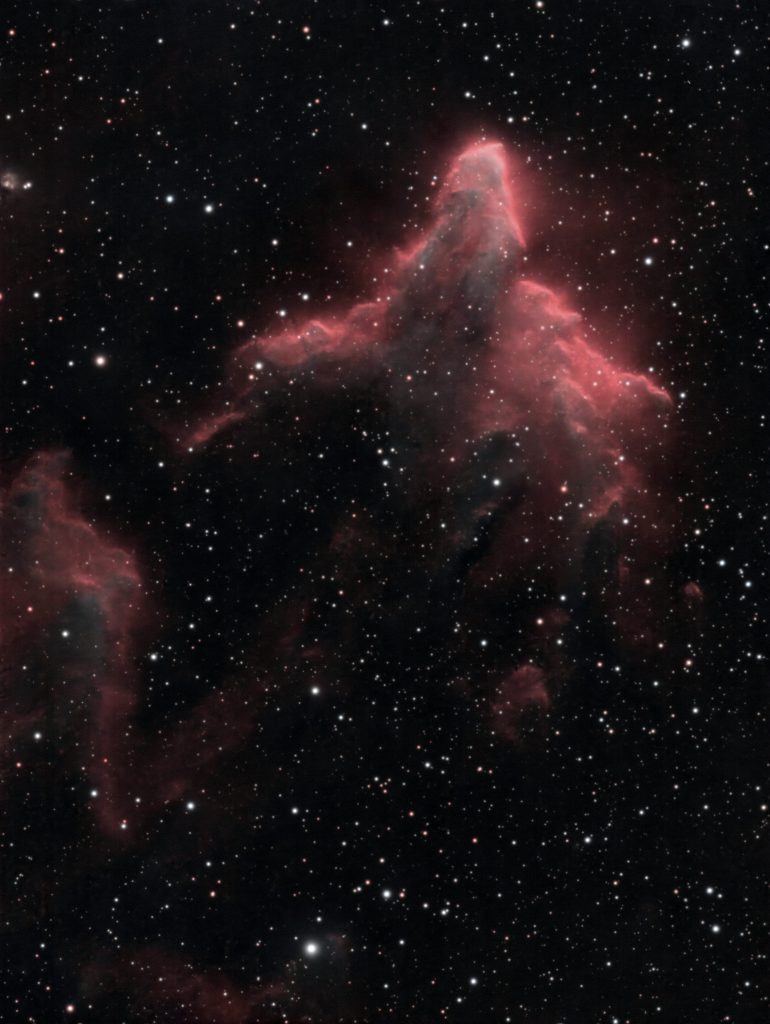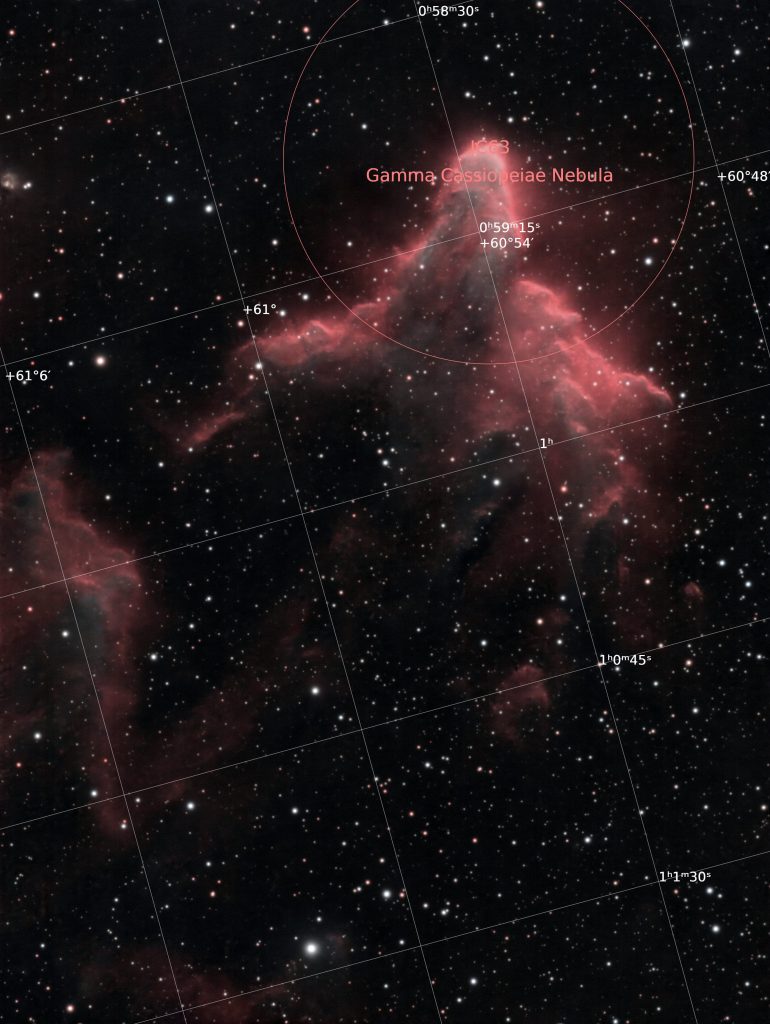
The IC 63 nebula, also known as the Ghost Nebula, is a reflection nebula located in the northern constellation Cassiopeia. It resides approximately 550 light-years from Earth in the vicinity of the luminous star Gamma Cassiopeiae (γ Cas), a blue-white subgiant variable star that serves as its primary illumination source.
In terms of physical dimensions, IC 63 spans approximately 2 light-years across. Its angular size as observed from Earth is roughly 10 arcminutes. The nebula consists primarily of hydrogen gas and dust that scatter and reflect the intense radiation from γ Cas, creating its characteristic ghostly appearance.
IC 63 is classified as a combination reflection/emission nebula. While it predominantly reflects starlight (hence its classification as a reflection nebula), it also exhibits some emission characteristics due to photoevaporation processes. The intense ultraviolet radiation from γ Cas is gradually eroding the nebular material, causing it to glow faintly in specific wavelengths as electrons recombine with ionized hydrogen atoms.
The nebula forms part of a larger molecular cloud complex that includes its companion nebula IC 59. Both objects experience significant radiation pressure from γ Cas, resulting in their distinctive cometary morphology with tails pointing away from the illuminating star.


